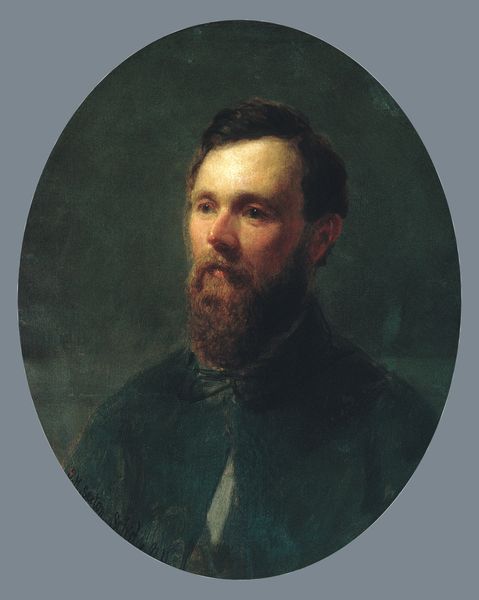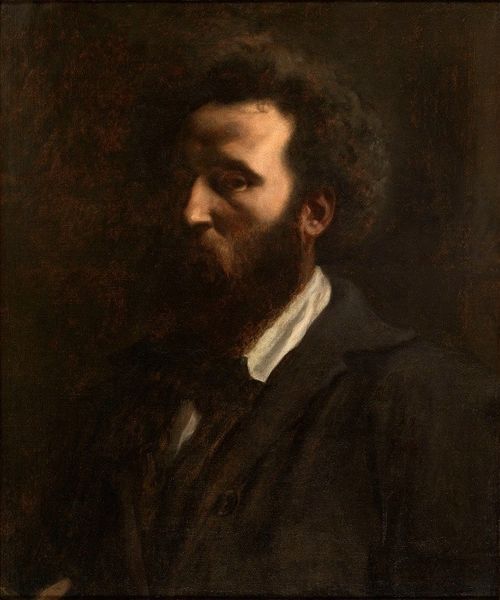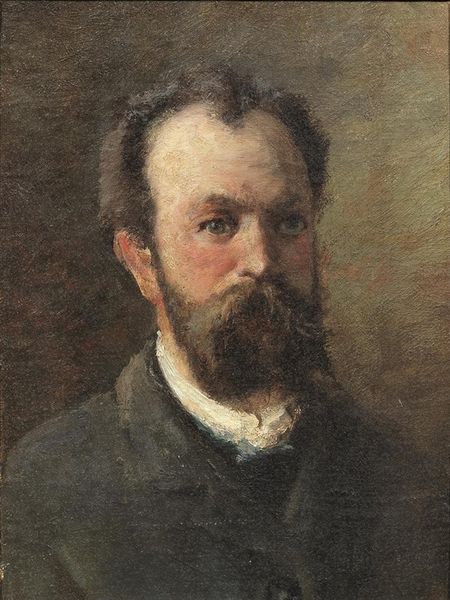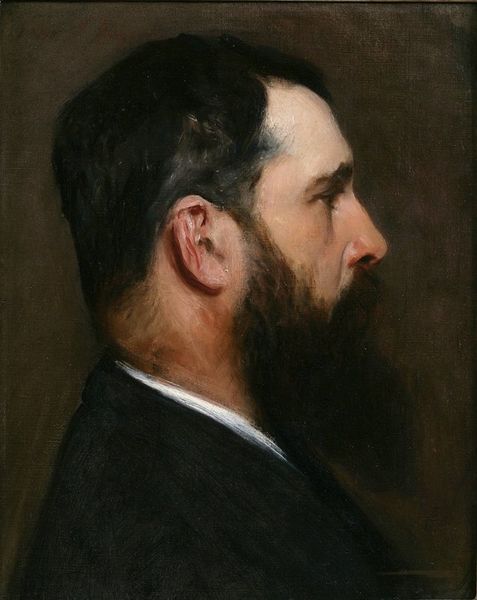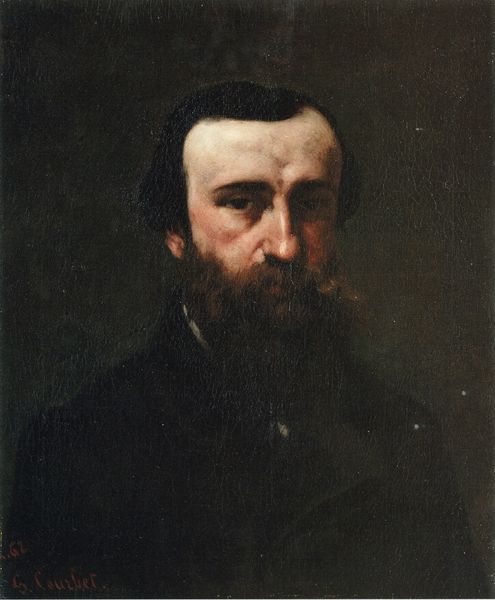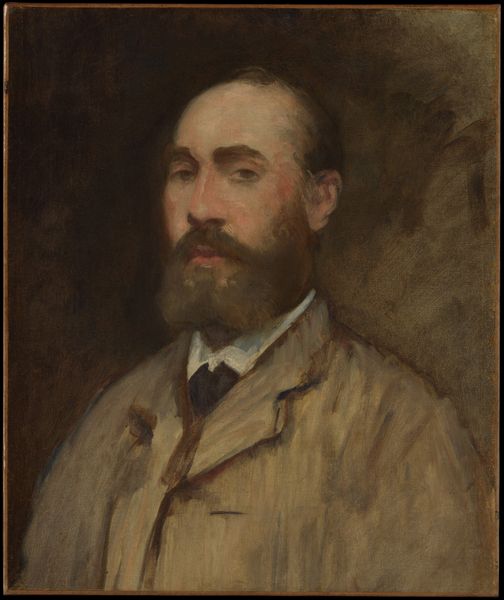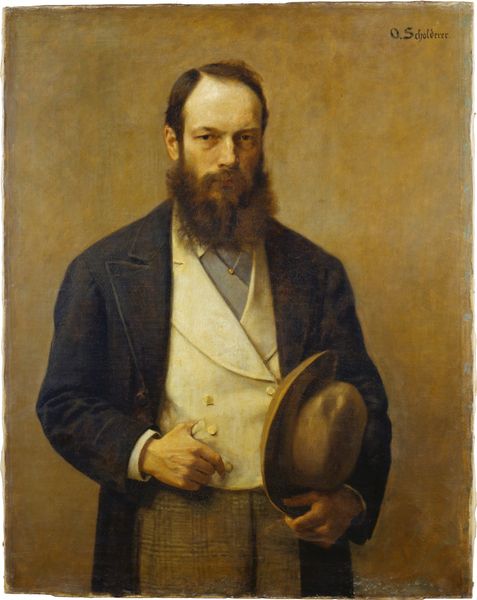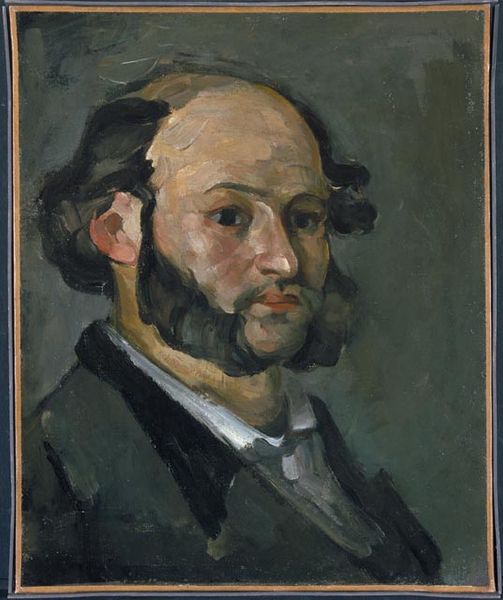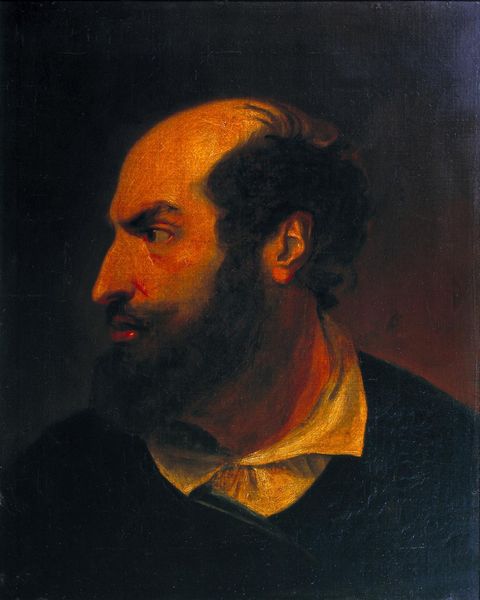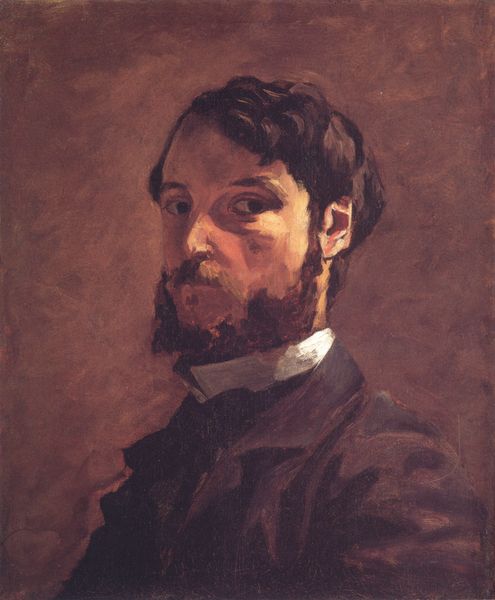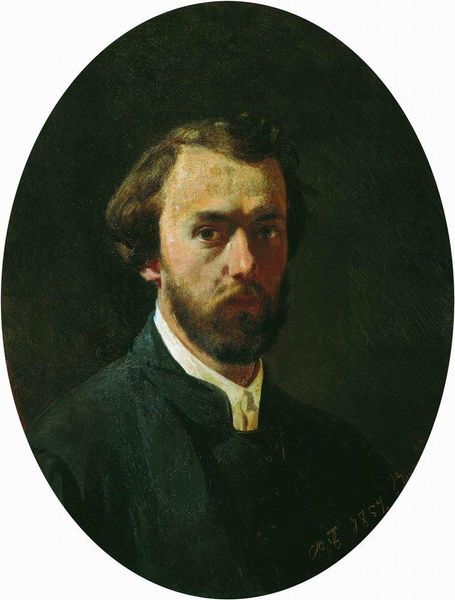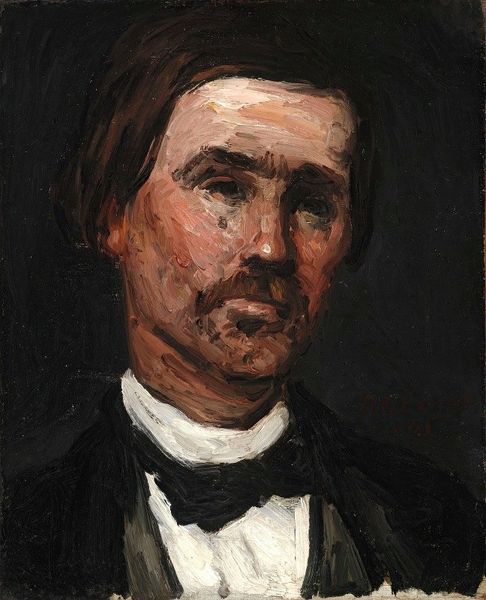
Copyright: Public Domain: Artvee
This is Gustave Courbet's "Portrait of a Man," painted in oil, a window into the artist’s psyche. Here, the penetrating gaze and solemn countenance become symbols of introspection and the quest for self-understanding. Consider the tradition of portraiture, stretching back to antiquity, as a means of immortalizing the individual. Yet, in Courbet's hands, it transcends mere likeness. We see echoes of Rembrandt's self-portraits, where the artist delves into the depths of his being, revealing the complexities of the human condition. The subject's direct gaze is a powerful motif. It challenges the viewer, demanding a response. This engagement echoes through art history, from the self-assured gazes of Renaissance portraits to the confrontational stares in contemporary art. It's a visual language passed down through generations, evolving in tone but consistent in its call for a connection. Here, we're invited into a silent dialogue, engaging with the psyche of the sitter on a profound, subconscious level. It is a testament to the cyclical nature of artistic expression, where motifs resurface, transform, and continue to shape our understanding of ourselves.
Comments
No comments
Be the first to comment and join the conversation on the ultimate creative platform.
